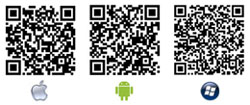Tutorial 4
Low Dose X-Ray Computed Tomography
A Three Hours Tutorial by Prof. Dr. Marc Kachelrieß, Heidelberg, Germany
X-ray CT is the work horse of the radiologist. The modality is widely available and provides highly accurate volumetric images of complete anatomical regions or complete patients with finest spatial resolution in a few seconds of scan time. New applications make the systems more and more useful leading to a world-wide increase of CT exams. With that increase the cumulative CT dose of the population increases as well, leading to unjustified press releases calling CT a high dose modality whilst at the same time ignoring the enormous amount of information the CT images carry.
During the last two decades significant achievements regarding x-ray dose reduction while maintaining or improving CT image quality have been made and are routinely available today. This tutorial will highlight these methods, be it of hardware- or software type, and it will show why many scans today can be carried out at dose levels around 1 mSv, which is far below the annual natural radiation dose, and which is a factor of five to ten lower compared to the situation one decade ago.
The tutorial will further highlight future low dose developments regarding hardware and software, including iterative reconstruction techniques that have recently entered clinical CT routine, but whose use is still limited and does not yet impact the average CT dose levels. Regarding clinical CT we will critically discuss reconstruction approaches such as compressive sensing or prior-based techniques which are not clinically used, although they are highly in vogue in the scientific community.
Last but not least the tutorial focuses on non-diagnostic CT such as interventional CT, micro-CT or image-guidance for radiation therapy, mostly systems equipped with flat detectors rather than diagnostic detectors. Due to the different requirements other approaches for low dose CT apply, and those modalities appear to be more open for sophisticated reconstruction techniques.
About the instructor:
 Marc Kachelrieß was born in 1969 in Nürnberg, Germany. In 1989 he began to study physics with a focus on theoretical particle physics. His diploma thesis was entitled “Meson exchange currents in light nuclei”. He received his diploma at the Friedrich-Alexander-University (FAU), Erlangen, Germany in 1995.
Marc Kachelrieß was born in 1969 in Nürnberg, Germany. In 1989 he began to study physics with a focus on theoretical particle physics. His diploma thesis was entitled “Meson exchange currents in light nuclei”. He received his diploma at the Friedrich-Alexander-University (FAU), Erlangen, Germany in 1995.
Then, Marc Kachelrieß started his dissertation at the Institute of Medical Physics of the FAU. He developed reconstruction algorithms to reduce metal artifacts in x-ray computed tomography (CT). In parallel, Marc Kachelrieß introduced a new method that allows to generate motion-free images of the human heart using standard CT data. Thereby the clinical feasibility of retrospective electrocardiogram-correlated image reconstruction from CT data was proven. This method is now in world-wide use in clinical CT scanners. Marc Kachelrieß received his Ph.D. at the FAU in 1998.
Since then, he focuses on manifold areas regarding computed tomography. His research covers image reconstruction of cone-beam CT data, iterative image reconstruction, compressive sensing, image reconstruction algorithms in general, and sophisticated calibration techniques. Marc Kachelrieß is further active in the field of cardiac CT, including cardiac perfusion measurements, and in the field of respiratory-correlated imaging. He is involved in developing algorithms for automatic exposure control for CT, algorithms for dual and multi-energy CT imaging, methods to reduce CT artifacts, and patient dose reduction techniques. Marc Kachelrieß develops non-rigid registration techniques to be used for motion-compensated imaging. His work also includes the design and development of micro-CT scanner hard- and software, micro-CT pre- and post processing software and image quality optimization techniques. Since 2010 Marc Kachelrieß is also active in the field of interventional projective and tomographic imaging where he was able to demonstrate that tomographic fluoroscopy can be achieved at the same dose levels as conventional projective fluoroscopy. An additional focus is high performance medical imaging, using standard PC hardware, graphics processing units (GPUs), Xeon Phi processors and field programmable gate array (FPGA) hardware, which enables real-time imaging even for highly complex algorithms in clinical routine.
Marc Kachelrieß is not only active in the medical imaging field, where clinical CT scanners, cone-beam CT systems for radiation therapy guidance and C-arm CT scanners are dominating, but also in the field of non-destructive testing, luggage screening, electron beam CT, industrial CT, CT metrology, and dimensional CT.
In 2002 Marc Kachelrieß completed all post doctoral lecturing qualifications (habilitation) for Medical Physics and in 2005 he was appointed Professor of Medical Imaging at the FAU. On the basis of his university teaching position he lectures in medical imaging technology, physics and algorithms. Since 2009 Marc Kachelrieß additionally holds an Adjunct Associate Professor position at the Department of Radiology at the University of Utah, USA. Since 2011 Marc Kachelrieß is also chairing the work group X-Ray Imaging and Computed Tomography in the department of Medical Physics in Radiology of the German Cancer Research Center (DKFZ) in Heidelberg, Germany.
Marc Kachelrieß is author or coauthor of more than 450 publications, and he is organizer of several conferences and workshops in the field of tomographic and high performance computational imaging.













